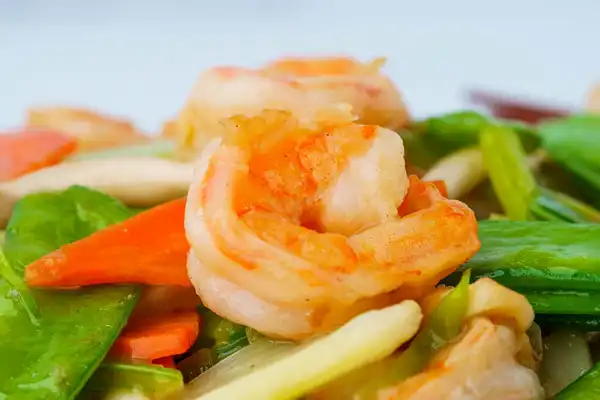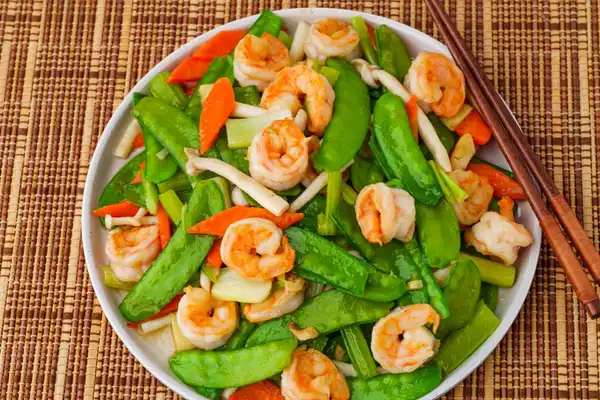This dish makes frequent (and welcome!) appearences at weeknight dinners. It comes together quickly, but the recipe makes no sacrifices in flavor or texture. The tender shrimp and crunchy snow peas, and the various textures and colors of the carrots, celery, and mushrooms, are a complete delight to eat.
Although you'll be whipping together a quick sauce for this stir-fry, you'll notice that the sauce ingredients are not very overpowering in flavor or amount. They're really just there for the assist. This is a stir-fry in the truly classic Cantonese style of highlighting the natural flavor of the main ingredients.
Check out a quick story summary of our recipe!



